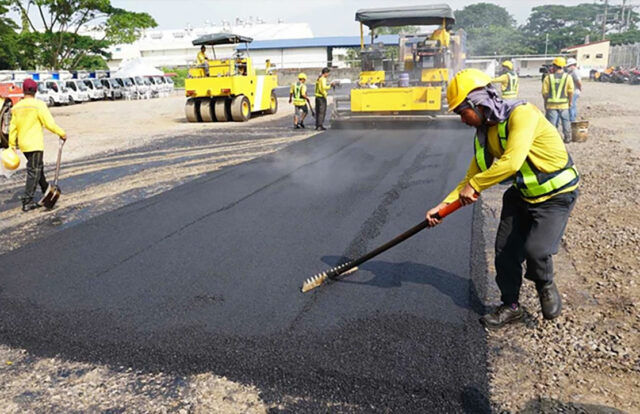I was bantering with a friend on the merits of reviving mandatory military training for students as a way of instilling patriotism and leadership values, especially at a time of mounting geopolitical tensions and natural calamities.
Now holding a senior management post in a private company, he paused when I pressed him for at least one to three good things he learned under that program in his youth. He cited more reasons against such training.
“Just two things,” he replied after some time. “First, always lead from the front. Second, you never ask subordinates to do anything you yourself would not do.”
His reply reminded me of instances when national officials tried to explain away indiscretions in word or deed by saying that they were just exercising their freedom as citizens to say or do as they pleased (i.e., the expectation that leaders be a good example be damned).
This piece is not about that proposed revival of military training for civilians (maybe another time), but that exchange made me muse about how organizations perform better when their bosses are held to account. And that can be done only when an organizational structure and culture are firmly in place to ensure that decision-making and implementation conform to exacting standards.
Which is what governance is all about.
BUZZWORD
“Good governance” has been promoted for decades now, and it has become a buzzword for those seeking to make organizations — whether government or private — work as they should.
Among others, the United Nations Economic and Social Commission for Asia and the Pacific (ESCAP) defined “governance” as “the process of decision-making and the process by which decisions are implemented.” ESCAP identified eight key traits of “good governance,” namely: it is participatory, consensus-oriented, accountable, transparent, responsive, effective and efficient, equitable and inclusive, and follows the rule of law. In this way, good governance “assures that corruption is minimized, the views of minorities are taken into account… that the voices of the most vulnerable in society are heard in decision-making” and “is also responsive to the present and future needs of society.”
Easily discernible here is the concept of “common good,” which is not the good for the greatest number — which contradicts the Pinoy value of “walang iwanan (no one left behind)” — but more reminiscent of that inclusive point in the Catechism of the Catholic Church that defines it as “the sum… of social conditions which allow people, either as groups or as individuals, to reach their fulfillment more fully and more easily.”
Good governance as a concept has been around since the 1970s and ’80s and is the “G” in the “ESG” (the others here being “environmental” and “social”) standard that became mainstream in the early 2000s. In the Philippines, both the government and private sectors have put in place structures to improve governance. The National Government has been pushing for more accountability and transparency (including through procurement reforms) across its agencies, while the Securities and Exchange Commission (SEC) has been rolling out measures to improve ESG compliance among companies listed at the Philippine Stock Exchange and now looks to encourage similar reporting by large, unlisted firms.
The Philippine Development Plan, which states that “[g]ood governance… fosters participation, ensures transparency, demands accountability, promotes efficiency, and upholds the rule of law in economic, political and administrative institutions and processes,” notes that “[i]t is a hallmark of political maturity but also a requisite for growth and poverty reduction, for there are irreducible minimum levels of governance needed for large-scale investment to occur and for social programs to be supported.”
Yet, ESG remained little more than a good idea for many organizations worldwide as late as 2019, according to one official of the World Economic Forum who spoke in an economic forum BusinessWorld staged at the start of the pandemic in late 2020.
To be sure, compliance with ESG regulatory requirements has been improving. A July 2024 article by the Philippine Daily Inquirer quoted SEC Chairman Emilio B. Aquino as saying that more than 95% of publicly listed firms filed required sustainability reports by the end of last year, compared to 22% before 2019 when the corporate regulator tightened this requirement. At the same time, the quality of reporting remains a hurdle, according to Sustainable Fitch, the ESG unit of the Fitch Solutions group, which said that the SEC itself has admitted that many companies tend to report only gains in their sustainability efforts.
A general picture of governance challenges can be gleaned from the Philippines’ mixed results in 2024 international governance rankings like those of the Bertelsmann Stiftung Transformation Index (where the Philippines placed 83rd out of 137 countries) and the Chandler Good Government Index (67th out of 100 countries).
ONE AT A TIME
Government and private sector efforts to improve governance in order to upgrade performance led to the formation of two related nonprofit advocacies: the Institute of Corporate Directors (ICD, focused on private businesses) in 1999, and the Institute for Solidarity in Asia (ISA, which focuses on government offices) a year later. Both advocacies fall under the Center for Excellence in Governance.
Both groups were founded by Harvard-educated economist Jesus P. Estanislao, who served as Socioeconomic Planning secretary in 1989-1990 and Finance chief in 1990-1992, and was the founding dean of the Asian Development Bank Institute in Tokyo in 1998, and founding president of the University of Asia and the Pacific in 1992-1997, among others.
In a recent chat, Mr. Estanislao explained that both the ICD and the ISA were his personal initiatives as a responsible citizen. “Everybody in the business community told me: ‘Hey Jess, you cannot do just corporate governance; you have to do public governance as well. It takes two to tango,” he recalled.
Writing recently on factors that started him on this journey, he said: “The impetus that led us to this advocacy has been the realization that poverty, corruption, and lack of civic consciousness have been the three endemic ills confronting Philippine society.”
“Moreover, no single silver bullet can fix these problems that have been weighing us down. They are closely interrelated; they reinforce one another, and they would take a long process of transformation to begin to minimize their combined ill effects,” he explained.
“We therefore proposed that nothing less than a long-term, sustained, transformation program through the discipline of good governance should be undertaken.”
Such a protracted struggle would need a “ground-up” strategy, he said, tackling “one corporation at a time, one government agency or local government unit at a time; and then getting them to undertake social outreach programs that push other corporations and government institutions to go on their own transportation journey as well.
“We don’t just give training,” Mr. Estanislao said in our recent chat. “We push the envelope for better practices, rules and regulations in the Philippines… we work with regulators — the Central Bank, the SEC, the GCG (Governance Commission for Government-Owned or -Controlled Corporations)… to bring the standards of corporate governance higher…”
He cited challenges in private sector and government perceptions of governance programs. “In the case of the private sector, they think they already know, but in reality they don’t,” he noted. “In the case of the public sector, they think that they need you, but many times they do not know how to use you properly.”
ICD and ISA initially adapted a globally accepted strategy execution program — the Balanced Scorecard of Harvard Business School — for government agencies and private businesses in the country.
In 2015, the ICD shifted to the ASEAN Corporate Governance Scorecard (ACGS) where the Philippines placed second among the region’s economies. IESE Business School later established a positive correlation between company placement in the ACGS and its premium price, attractiveness to investors, as well as overall financial and economic performance. “The ACGS continues to this very day, with more Philippine publicly listed corporations notching high, commendable scores,” Mr. Estanislao wrote of the biennial ranking.
The ICD also formed the Global Network of Director Institutes (GNDI) together with eight other leading corporate director organizations in order to provide a platform for continuous sharing of best practices in corporate governance and professional director development. GNDI now counts 21 director institutes among its members.
As for government efforts, the Philippine Navy and the Philippine Army, plus four local governments (Iloilo City, Balanga City, San Fernando City in Pampanga, and San Fernando City in La Union) made it in 2019 to the Hall of Fame of Palladium, which originated at the Harvard Business School. Since then, other National Government agencies and local governments have shown that they could cut poverty incidence and corruption, as well as improve public confidence in their services, based on independent public perception surveys.
Like many other outfits, the pandemic forced ICD to move its corporate governance programs online, thus widening its reach.
The ISA worked with public hospitals under the Department of Health. “These public hospitals, by adopting a transformation road map, ended up being able to attend to the demands of the pandemic and, at the same time, build up capacity for the future,” Mr. Estanislao recalled.
The ISA has since reached out to specialty hospitals like the Philippine Heart Center, and close to 80 such establishments are now enrolled in the ISA program. Also in ISA’s sights are public school divisions and public community colleges nationwide.
The Archdiocese of Manila has also adopted ISA’s program and, depending on the outcome of its participation, other dioceses in the Philippines may follow suit.
Both governance advocacies have now identified three core tasks on the road ahead:
* Cascade governance values and best practices down to every individual at work or in school, with outreach to families and local communities.
* Continue the push for higher levels of efficiency, effectiveness, and professionalism within each corporation and agency.
* Encourage private companies and government agencies to undertake solidarity initiatives that address poverty, corruption, and lack of civic consciousness.
“The biggest hurdle,” Mr. Estanislao said, “would be any lack of commitment to really make a difference.”
Wilfredo G. Reyes was editor-in-chief of BusinessWorld from 2020 through 2023.
















